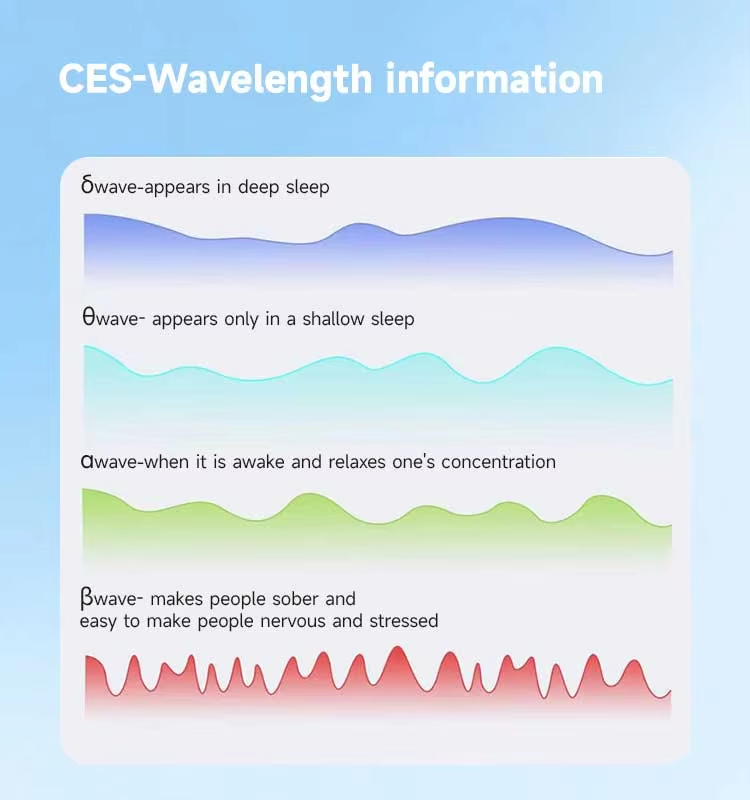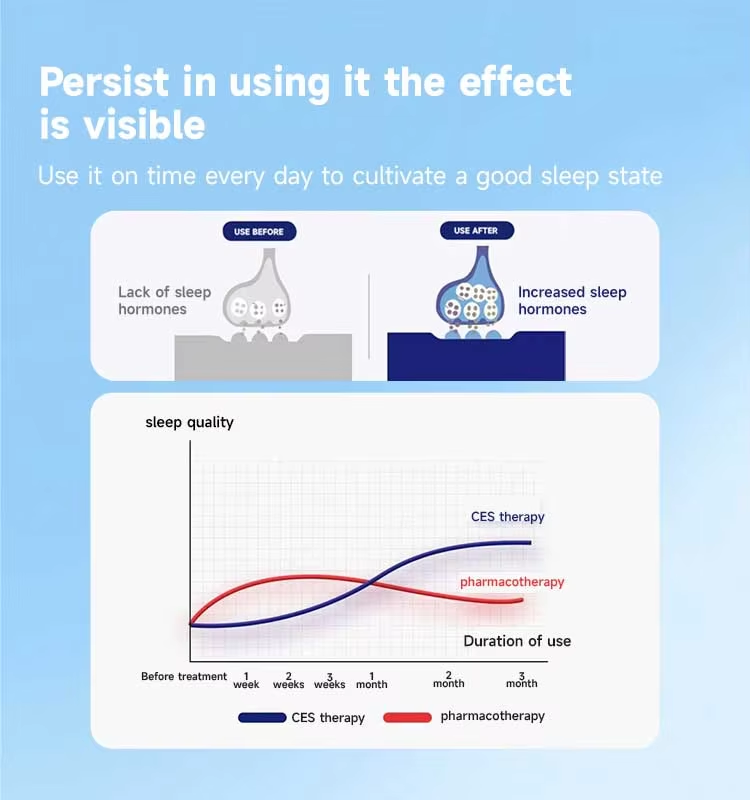CES stands for Cranial Electrotherapy Stimulation, also known as "Transcranial Microcurrent Stimulation". This is a physical approach that has passed FDA safety standards, with no reported side effects. Its working principle involves using low-intensity microcurrent to gently stimulate the brain's limbic system, simulating the body's normal wave frequencies. This helps to adjust irregular brain waves, support deeper rest, and encourage the brain's secretion of endorphins, which can help regulate mood and promote a sense of calm.
When it comes to challenges with rest, the brain’s electrochemical signals—known as neurotransmitters—play a role in regulating the state between being awake and resting. CES works by gently modulating these signals through electrotherapy, helping to support a more balanced state that can encourage restful periods.
Moods and emotional states, including feelings of tension, are influenced by the brain's electrochemical signals. When these signals are less balanced, it can affect the body's emotional regulation. The CES AT-9 machine uses low-frequency electrical pulses to gently stimulate the brain, helping to convey a sense of relaxation and support a calmer state.










